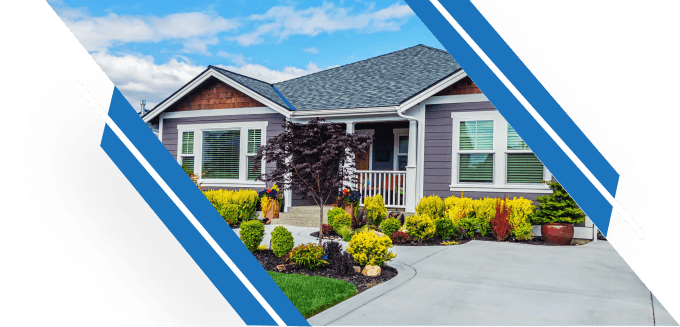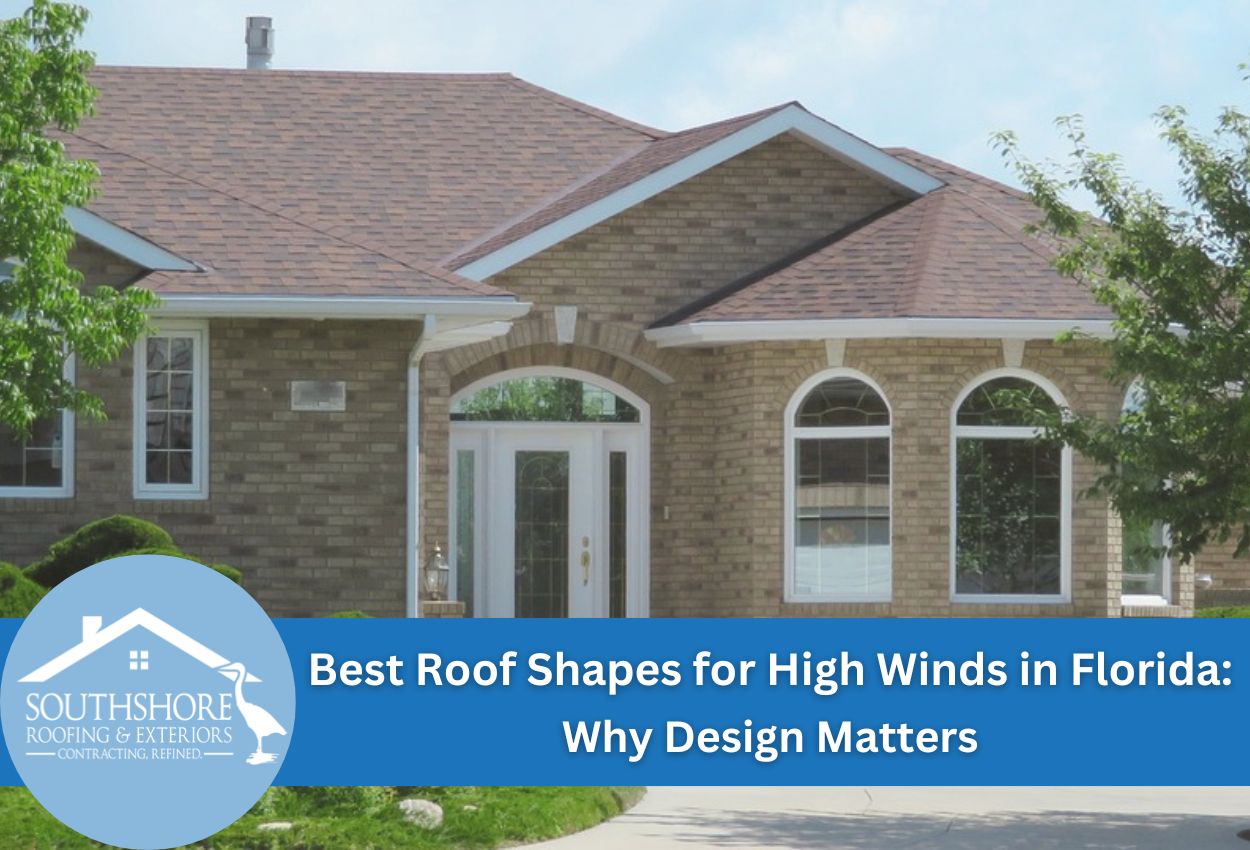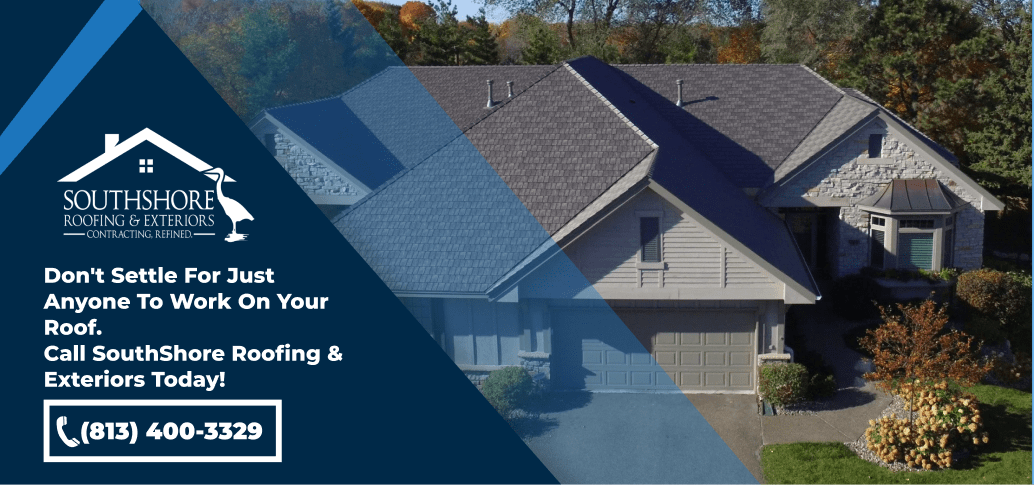In the face of Florida’s hurricanes, choosing the right roof shape isn’t just a matter of aesthetics—it’s a crucial aspect of home safety and durability. Because of the state’s harsh conditions, including high winds and heavy rainfalls, homeowners need roofing solutions that can withstand these severe weather challenges. The right roof shape can significantly improve a building’s resistance to the destructive forces of nature, making this decision more critical than ever.
In the article, we will go over the importance of selecting the best roof shapes to withstand the high winds common in Florida. We’ll discuss various hurricane-resistant roof designs, windproof roofing materials, and other durable roofing options that cater specifically to Florida’s rigorous weather demands. By understanding how different roof shapes interact with intense wind, homeowners can make informed decisions that not only protect their homes but also potentially reduce insurance costs and increase property value.
From gabled roofs to hip roofs, each design has advantages and challenges. Understanding the impact of roof shape is essential for homeowners in hurricane-prone areas of the state, as it plays a crucial role in resilience and safety.
Key Factors of Roof Shape That Determine Strength
The strength and resilience of a roof in hurricane-prone areas like Florida depend significantly on its shape. The architectural design of the roof can influence how wind interacts with the structure, potentially reducing or increasing the risk of damage during a storm. Below, we will look at the key aspects of roof geometry—pitch, pattern, and overhang—that determine a roof’s ability to withstand high winds.
The pitch of the roof, or its slope, is a primary factor in its wind resistance. Steeper pitches tend to divert wind upward, reducing the pressure exerted directly on the roofing materials. Conversely, roofs with a lower pitch may be more susceptible to uplift and damage under hurricane conditions. Considering hurricane-resistant roof designs, homeowners should evaluate the benefits of different roof pitches to find the most suitable option for their specific needs.
The design of the roof also plays a vital role. For example, hip roofs, with slopes on all sides, are generally more stable and effective against high winds compared to gable roofs, which have two flat ends that can act as sails in strong winds. Additionally, the overhang of the roof should be minimized in areas prone to high winds. Excessive overhang can catch wind, increasing the likelihood of structural failure during a hurricane.
Understanding these factors can help homeowners in Florida choose the best roof shape for the state’s weather, so their homes are ready to face the challenges of hurricane season. Each element, from the pitch to the design and overhang, must be carefully considered to enhance the overall durability and wind resistance of the roofing system.
The Wind Resistance of Hip Roofs
Hip roofs are renowned for their resilience in high-wind situations, such as those frequently experienced in Florida. Characterized by slopes on all four sides that converge at the top, hip roofs offer a self-bracing structure that is inherently more stable than other roof types. This architectural design reduces the risk of damage during intense storms by enabling a more uniform distribution of wind pressure across the roof’s surface.
In Florida, where weather conditions can include severe hurricanes, the structural integrity of hip roofs is a clear advantage. Their shape allows them to deflect high winds better than most roof designs, making them one of the best choices for areas prone to high winds.
This roof design not only offers superior protection but also contributes to the overall longevity of the structure. Utilizing windproof roofing materials along with a hip roof can further improve a home’s ability to withstand Florida’s hurricane season. As a result, hip roofs are not only a practical option but a wise investment for homeowners looking for durable roofing solutions in hurricane-prone areas.
Gable Roofs & Their Ability to Withstand Storms
Gable roofs, characterized by their triangular shape, are a popular choice among homeowners for their classic aesthetic appeal and effective water drainage capabilities. This roof type is not only visually appealing but also provides ample attic space, making it a popular option in the residential market. However, when considering the intense weather conditions in Florida, particularly during hurricane season, the structural integrity of gable roofs can be a concern.
With proper reinforcement, gable roofs can be adapted to withstand the high winds commonly experienced in Florida. Accessories such as hurricane straps or clips can be used to secure the roof to the walls, increasing its overall wind resistance. Additionally, homeowners must pay attention to the materials used. Windproof roofing materials can significantly bolster a gable roof’s ability to endure the forces exerted by hurricane-strength winds.
For homeowners in Florida, choosing a gable roof means carefully thinking about these factors to make sure their property is protected against the frequent and severe weather events in the area. By integrating hurricane-resistant roof designs and selecting appropriate materials, gable roofs can offer both aesthetic and functional benefits, making them a good roof option in high-wind regions.
How Do Flat Roofs Hold Up In Extreme Winds?
Flat roofs are a common architectural choice for commercial and residential buildings, particularly in urban environments. Due to their minimalistic design and ease of installation, flat roofs are very popular in many areas, including those prone to severe weather conditions like Florida.
Despite their name, flat roofs are not completely flat but have a slight pitch to allow water drainage. This slight incline also has a major role in their wind resistance. The aerodynamic nature of a flat roof allows wind to pass over the surface with less resistance, reducing the risk of uplift—a common problem in more sloped roof designs. This characteristic makes flat roofs a suitable option for buildings in areas affected by high winds and frequent storms.
The structural integrity of flat roofs in extreme winds can be attributed to their sturdy construction and the use of windproof roofing materials. When designed with hurricane-resistant elements, flat roofs can effectively reduce wind pressure and mitigate potential damage. This resilience not only protects the building but also contributes to the longevity of the roof, making it a cost-effective solution for many property owners in hurricane areas.
The resistance of flat roofs to severe winds is one reason for their use on various building types, as they offer a reliable and durable roofing solution suitable for Florida’s challenging weather conditions.
Other Factors That Determine Wind Resistance
While the shape of a roof is crucial for minimizing damage during hurricanes, other factors such as material choice, installation quality, and maintenance also play important roles in a building’s wind resistance. Selecting the right materials, ensuring high-quality installation, and following a consistent maintenance schedule are key to a roof’s durability against severe winds.
Windproof roofing materials are engineered to withstand the tremendous forces exerted by hurricane winds. These materials, when combined with a hurricane-resistant roof design, provide an additional layer of protection that can mean the difference between minimal damage and catastrophic failure. It is vital for homeowners, particularly in Florida, to choose materials that are tested and proven to be effective in high wind conditions such as metal panels or Class D-rated asphalt shingles.
Installation quality is equally important for roof wind resistance. A roof that was improperly installed, regardless of the quality of materials used, is likely to suffer more damage during a hurricane. Professional installation by certified contractors means that roofing components are securely attached and meet local building codes, which are often designed with hurricane safety in mind.
Regular maintenance, including inspections and prompt repairs, is crucial in sustaining a roof’s integrity over time. Even the smallest damage can become a major issue under the stress of a hurricane. A well-maintained roof is more likely to stay intact through severe weather, protecting the structure beneath and potentially saving lives and property.
While hurricanes are powerful, a combination of the right roof shape, quality materials, professional installation, and ongoing maintenance can strengthen a building’s resilience against such extreme events.
Strategic Considerations for Roof Installation in High Wind Areas
When installing a roof in areas prone to high winds, such as Florida, the importance of professional installation and adherence to local building codes cannot be overstated. These measures make sure the roofing structure is capable of withstanding severe weather conditions, particularly during hurricane season. It is crucial for homeowners to work with roofing contractors who are not only familiar with but also adhere to the stringent codes and regulations that govern construction in hurricane-prone areas.
Additionally, consulting with local roofing experts is a good idea for homeowners. These professionals have in-depth knowledge of the best roof shapes for high winds and are experienced in working with windproof roofing materials. Their expertise extends to understanding local weather patterns and selecting durable roofing solutions that provide maximum protection during storms. By leveraging their insights, homeowners can make informed decisions on the best roofs for Florida weather so their homes are well-equipped to handle the challenges posed by frequent hurricanes.
Ultimately, professional installation, compliance with local codes, and expert consultation form the backbone of effective roofing strategies in high-wind regions. This approach not only protects the structural integrity of the roof but also improves the overall safety and longevity of the property.
Get Expert Roofing Solutions from SouthShore Roofing & Exteriors
When it comes to safeguarding your home from Florida’s high winds, choosing the right roof shape is crucial. SouthShore Roofing & Exteriors offers hurricane-resistant roof designs tailored for Florida’s weather conditions. Whether you need windproof roofing materials or durable roofs for high winds, we have the expertise to provide the best roofing solutions for hurricane areas. Don’t leave your property vulnerable to severe weather – contact SouthShore Roofing & Exteriors today at (813) 400-3329 for professional installation and peace of mind.




